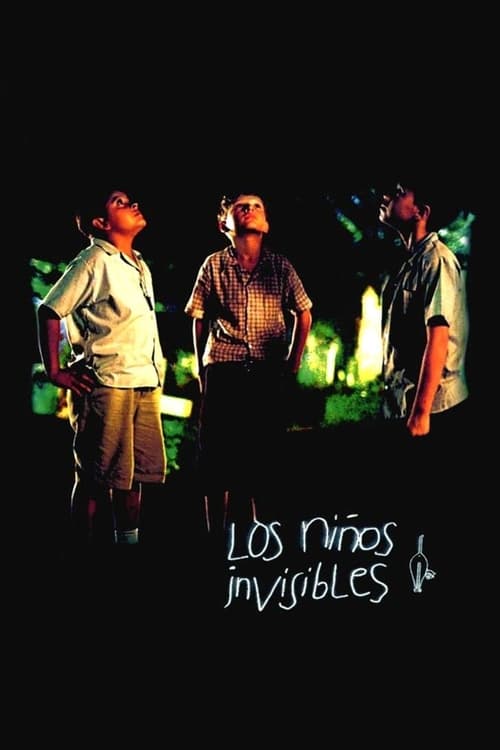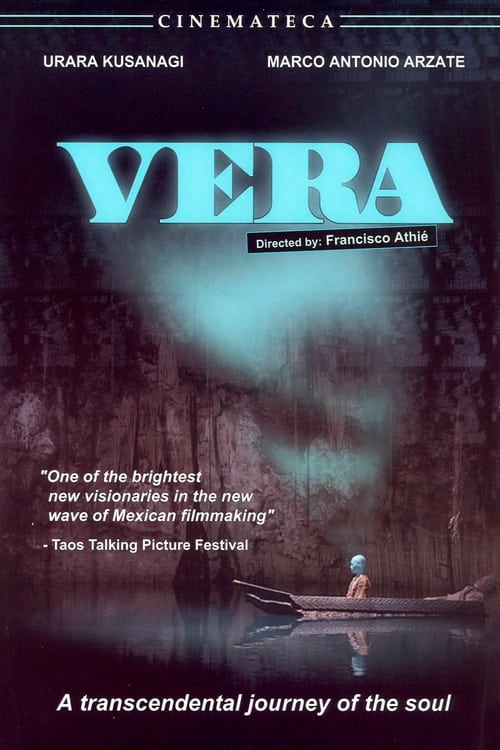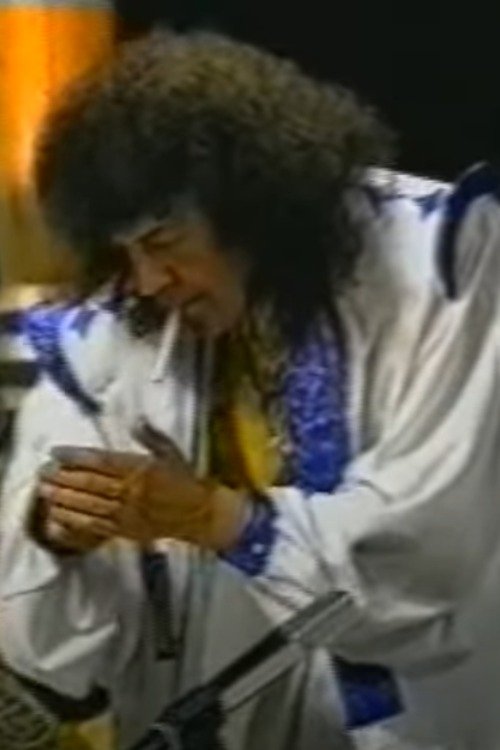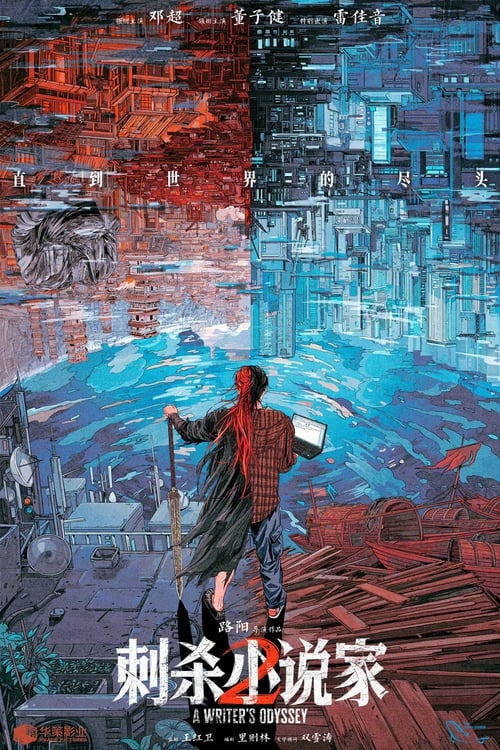
Ask Your Own Question
What is the plot?
In the quiet stillness of a small Colombian town in the 1930s or 1940s, the story of Rafael begins, told through the reflective voice of an elderly man recalling his childhood from the 1950s. His narration opens with a tender confession: a secret love for his neighbor, Martha Cecilia, a girl both beautiful and distant, described by his friends as "airy." Rafael, only seven years old, is consumed by a yearning to see her without being noticed, to know her world without crossing the invisible line that separates childhood innocence from the adult realm of secrets and desires.
Rafael's infatuation is the spark that ignites the entire narrative. He is not just a boy with a crush; he is a boy who dreams of transcending his own visibility, of slipping unnoticed into the spaces where Martha Cecilia moves. This yearning leads him and his close-knit group of friends into a world of forbidden magic and daring adventure. They learn of a secret black magic ritual that promises invisibility, a power that could grant Rafael the freedom to observe Martha Cecilia unseen.
The children's quest begins with the theft of a magic recipe and its rare ingredients. These are no ordinary items but symbols of a mysterious and dangerous knowledge: the gizzard of a stolen hen, the heart of a cat, and a scapulary--a Catholic medallion imbued with spiritual significance. The theft itself is a test of courage and cunning, fraught with the risk of discovery and punishment. The children move through the town's shadows, their hearts pounding with the thrill of the forbidden.
As midnight approaches, the children gather in the local cemetery, a place heavy with symbolism--the boundary between life and death, innocence and experience. The cemetery is cloaked in darkness, the moon casting long, eerie shadows over the tombstones. Here, in the silence broken only by the rustling of leaves and the distant hoot of an owl, they perform the ritual. The air is thick with anticipation and fear. The children chant the incantations, their voices trembling yet resolute, as the ingredients are combined in a solemn, secret ceremony.
The ritual's success is ambiguous yet palpable. Rafael and his friends feel themselves slipping away from the gaze of the world, becoming invisible not just in body but in spirit. This newfound invisibility allows Rafael to move closer to Martha Cecilia, to observe her without the weight of his own presence. The film captures these moments with a delicate blend of magical realism and childhood wonder, portraying invisibility as both a literal and metaphorical escape.
Throughout the story, the tension builds not through violence or death but through the emotional stakes of childhood love and the perilous thrill of breaking rules. There are no fatal confrontations or tragic endings; instead, the narrative culminates in a quiet but profound revelation of mutual affection. Unknown to Rafael, Martha Cecilia harbors a secret love for him as well, a fact that deepens the emotional resonance of their interactions and the film's nostalgic tone.
The climax unfolds as Rafael, invisible to all but himself, finally approaches Martha Cecilia's home. The camera lingers on his tentative steps, the flutter of his heart, the soft whispers of the night. The ritual's magic, whether real or imagined, has granted him a moment of closeness that seemed impossible before. The film's final scenes are suffused with a bittersweet sense of innocence lost and memories cherished, as the elderly narrator reflects on how these childhood adventures shaped his life.
No one dies in this story; no violence mars the tender landscape of youthful longing. Instead, the film ends on a note of reflection and nostalgia, emphasizing the power of imagination and the enduring impact of first love. Rafael's journey into invisibility becomes a metaphor for the universal desire to be seen and understood, even when we feel most unseen.
The Invisible Children closes with the elderly Rafael's voice fading into the quiet of the Colombian town, a place where magic and memory intertwine, and where the invisible children of yesterday remain forever visible in the heart.
What is the ending?
The ending of "The Invisible Children" sees the main characters, Jason, Bobby, and K.C., returning to the United States after their harrowing experiences in Uganda. They are deeply affected by the plight of the children they encountered, particularly those abducted by the Lord's Resistance Army. The film concludes with a call to action, urging viewers to become aware of the ongoing conflict and to help raise awareness and support for the affected children.
In a more detailed narrative, the final scenes unfold as follows:
As the film approaches its conclusion, Jason, Bobby, and K.C. find themselves back in the United States, but the weight of their experiences in Uganda lingers heavily on their hearts and minds. The trio is visibly changed; their faces reflect a mix of sorrow, determination, and a newfound sense of purpose. They gather in a small room, surrounded by photographs and footage from their time in Uganda, each image a stark reminder of the children they met and the horrors they witnessed.
In a poignant moment, Jason speaks about the children they encountered, particularly the young boys and girls who had been forced to become soldiers or were left orphaned by the violence. His voice trembles with emotion as he recounts the stories of resilience and despair, emphasizing that these children are not just statistics but individuals with dreams and hopes. Bobby and K.C. listen intently, their expressions mirroring Jason's anguish and resolve.
The scene shifts to a community gathering where the trio presents their documentary footage to an audience. The room is filled with concerned faces, and as the images of the Ugandan children flash on the screen, the atmosphere becomes charged with empathy and urgency. The audience is visibly moved, some wiping away tears, others leaning forward in their seats, captivated by the stories being shared. The trio's passion ignites a spark of awareness, and they encourage the audience to take action, to not turn a blind eye to the suffering of others.
As the credits begin to roll, the film intersperses clips of the children in Uganda, juxtaposed with scenes of the trio back home, working tirelessly to raise awareness. They organize events, speak at schools, and engage with various communities, all while maintaining a strong connection to the children they left behind. The film closes with a powerful message about the importance of advocacy and the responsibility of individuals to stand up against injustice.
In the final moments, the fate of each main character is revealed. Jason, driven by his experiences, dedicates himself to humanitarian work, focusing on the plight of children affected by war. Bobby finds a way to channel his creativity into raising awareness through art and storytelling, using his talents to keep the conversation alive. K.C., inspired by the resilience of the children, pursues a career in social work, aiming to provide support and resources for those in need.
The film ends on a hopeful note, suggesting that while the journey is far from over, the commitment to making a difference is unwavering. The trio's bond remains strong, united by their shared mission to ensure that the stories of the invisible children are heard and that their struggles are not forgotten.
Is there a post-credit scene?
The movie "The Invisible Children," produced in 2001, does not contain a post-credit scene. The film concludes its narrative without any additional scenes or content after the credits roll. The focus remains on the powerful and emotional story of the children affected by the conflict in Northern Uganda, particularly highlighting the impact of the Lord's Resistance Army and the experiences of the young victims. The film aims to leave the audience with a strong sense of urgency and a call to action regarding the plight of these children, rather than providing any additional narrative or closure through a post-credit sequence.
What are the main challenges faced by the children in the film?
The children in 'The Invisible Children' face numerous challenges, including the constant threat of violence from the Lord's Resistance Army (LRA), the trauma of being abducted and forced to become child soldiers, and the struggle to find safety and stability in a war-torn environment. Their emotional states are marked by fear, loss, and a desperate longing for normalcy.
How does the character of Jacob represent the experiences of child soldiers?
Jacob, one of the central figures in 'The Invisible Children,' embodies the harrowing experiences of child soldiers. His journey reveals the internal conflict between his desire for freedom and the indoctrination he faces from the LRA. Jacob's emotional turmoil is palpable as he grapples with memories of his family and the violence he has witnessed, showcasing the deep psychological scars left by war.
What role does the community play in the children's lives throughout the film?
The community plays a crucial role in the lives of the children, providing a semblance of support and safety amidst chaos. The film highlights how local families and organizations come together to protect the children, offering shelter and resources. This sense of community is vital for the children's emotional healing and resilience, as they find strength in their shared experiences.
How does the film depict the impact of war on childhood innocence?
The film poignantly illustrates the impact of war on childhood innocence through the stark contrast between the children's joyful memories of play and the harsh realities they face. Scenes of laughter and camaraderie are interspersed with moments of fear and loss, emphasizing how the conflict robs them of their youth and forces them into adult situations far too soon.
What specific events lead to the children's abduction by the LRA?
The children's abduction by the LRA is depicted through a series of harrowing events, including nighttime raids on their villages. The film captures the chaos and terror of these raids, where children are forcibly taken from their homes, often in front of their families. The emotional weight of these scenes is heavy, as the children are shown grappling with confusion and despair as they are thrust into a life of violence and survival.
Is this family friendly?
"The Invisible Children," produced in 2001, is a documentary that focuses on the plight of children affected by the civil war in Northern Uganda, particularly those impacted by the actions of the Lord's Resistance Army (LRA). While the film aims to raise awareness about these issues, it contains several potentially objectionable or upsetting scenes that may not be suitable for children or sensitive viewers.
-
Violence and Conflict: The film depicts the harsh realities of war, including scenes of violence and the impact of armed conflict on children. This may be distressing for younger audiences.
-
Child Soldiers: There are discussions and visual representations of children being abducted and forced to become soldiers, which can be emotionally challenging to watch.
-
Trauma and Suffering: The documentary includes testimonies from children and families who have experienced significant trauma, loss, and suffering due to the war, which may evoke strong emotional reactions.
-
Grief and Loss: Scenes that portray the grief of families who have lost loved ones or have been separated can be particularly upsetting.
-
Poverty and Desperation: The film highlights the extreme poverty and dire living conditions faced by many children, which may be difficult for some viewers to process.
Overall, while the film serves an important purpose in raising awareness about these critical issues, its content may be too intense for younger viewers or those who are sensitive to themes of violence and trauma.





















